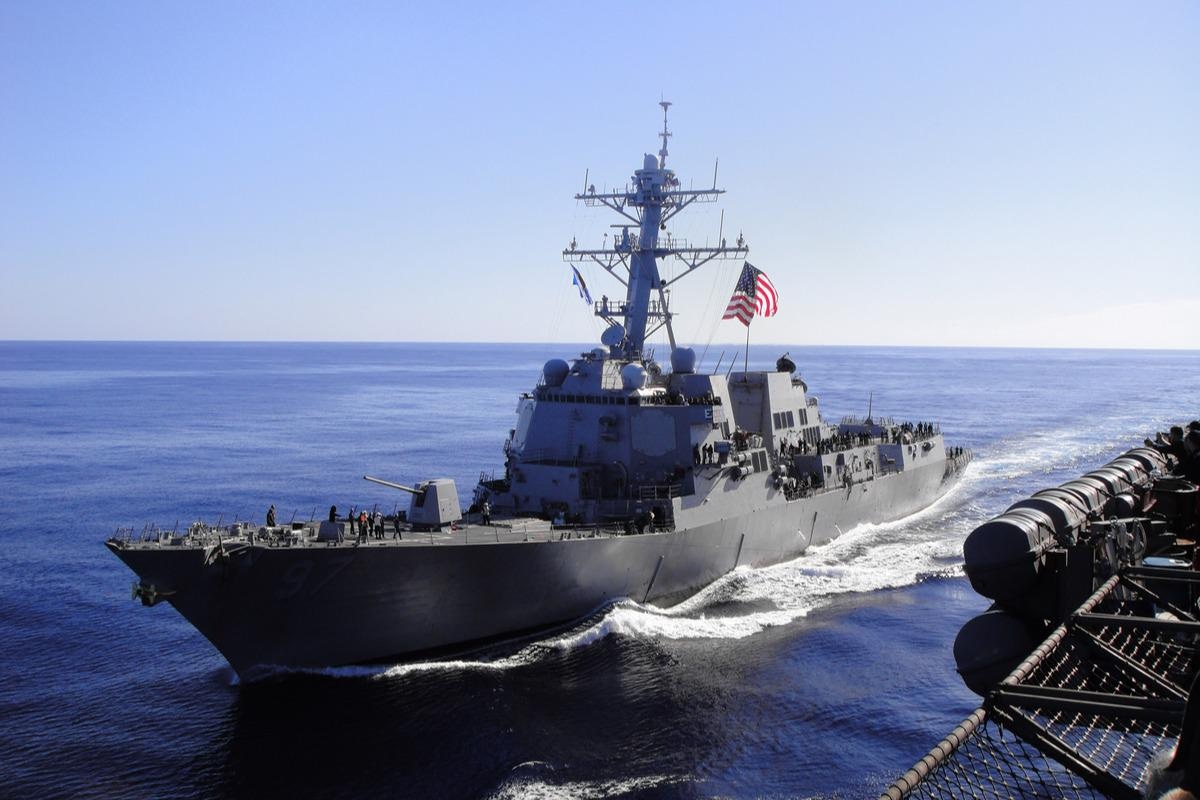A recent study posted to the medRxiv* pre-print server investigated the application of wastewater surveillance of seagoing military vessels and U.S. coast guard installations to mitigate the spread of severe acute respiratory syndrome coronavirus 2 (SARS-CoV-2).
 Study: Wastewater Surveillance of U.S. Coast Guard Installations and Seagoing Military Vessels to Mitigate the Risk of COVID-19 Outbreaks. Image Credit: Extra_Photographs111111/Shutterstock
Study: Wastewater Surveillance of U.S. Coast Guard Installations and Seagoing Military Vessels to Mitigate the Risk of COVID-19 Outbreaks. Image Credit: Extra_Photographs111111/Shutterstock
Military installations are at a high risk of contracting coronavirus disease 2019 (COVID-19) infections as well as facilitating widespread transmission of the virus. Monitoring the symptoms and diagnoses of each trainee in these installations and in seagoing military vessels is impractical. Surveilling wastewaters at such sites can help not only monitor but also control the spread of SARS-CoV-2.
About the study
The present study assessed the impact of surveilling wastewaters in the U.S. Coast Guard training installations and military vessels, like coast guard cutters, to screen the spread of SARS-CoV-2.
Three U.S. coast guard installations, referred to as training centers A, B, and C, were selected to conduct wastewater testing. Training center A housed more than 1,000 trainees while centers B and C housed around 50 to 200 persons. At each training center, wastewater access points were discerned. The team sampled the wastewater using a tampon, which was connected to a carabiner via a resilient line and was placed downstream of the wastewater for 24 to 96 hours. The samples were then sealed in bags that were spiked with bovine syncytial respiratory virus (BRSV) vaccine if the samples were to be kept in storage for over a day.
One to four days after sampling the sample was collected in a 50-ml centrifuge tube and the volume was then adjusted to around 48 ml with distilled water. The extracted sample was concentrated to obtain ribonucleic acid (RNA).
In the case of seagoing vessels, wastewater streams were differentiated into blackwater containing urinary and fecal matter, and gray water consisting of wastewater from showers, sinks, and kitchens. Blackwater was sampled by collecting 5 ml and diluting it to approximately 48 ml with distilled water. These diluted samples were then spiked with the BRSV vaccine and extracted to obtain pure RNA.
A real-time quantitative reverse-transcription polymerase chain (RT-qPCR) reaction was used to analyze the RNA extracted. The viral genes N1 and E were assessed using a primer and their expression was compared against the expression of a fecal indicator virus called pepper mild mottle virus (PMMoV). The genes N1 and E were also quantified against PMMoV to assess the fecal matter versus the viral matter in the samples.
Results
The study results showed that at training center A, two wastewater samples were collected between March 2021 and December 2021. From day 1 to day 53, a total of 26 individuals with COVID-19 were detected. Among the collected samples, samples examined on days 29, 36, and 50 had SARS-CoV-2 genomes. Around 95% of the individuals in training center A had been vaccinated with the first dose by mid-April and 95% had been vaccinated with the second dose by mid-May.
In the second cohort of training center A, two samples that were collected on days 112 and 115 tested COVID-19-positive; however, no viral genome was detected in the sampled wastewater on those days. The highest ratio of viral gene and PMMoV in the wastewater samples was 0.0254, recorded on day 179.
At training center B, only 58.5% of the trainees were fully vaccinated on day 1 which increased to 79.5% by day 117. SARS-CoV-2 genome was detected on day 18 in the wastewater samples collected and COVID-19 positive cases were diagnosed on days 50, 52, and 53. At training center C, 73.2% of the trainees were fully vaccinated on day 1 and 83.6% by day 39.
Four samples of blackwater were collected from seagoing vessels, among which only one had SARS-CoV-2 genetic fragments, quantified at 2.64E-5 for the N1 gene and 1.96E-5 for the E gene.
Conclusion
The study findings showed that the number of trainees living in the training centers was inversely proportional to the sensitivity of the surveillance of wastewater. The study suggested that different correlations between signal strength and the ratio of SARS-CoV-2 and PMMoV quantity per person may exist at different locations. Also, the amount of SARS-CoV-2 shed by an infected individual in the wastewater depended on the severity of the disease, vaccination status, and any history of viral infection.
The researchers concluded that wastewater surveillance can be efficiently used as an epidemiological tool. It can be used to monitor and detect infections in asymptomatic individuals based on the presence of SARS-CoV-2 genomes in the wastewater. This can allow timely isolation and treatment of the infected individuals and curb further transmission of the virus.
*Important notice
medRxiv publishes preliminary scientific reports that are not peer-reviewed and, therefore, should not be regarded as conclusive, guide clinical practice/health-related behavior, or treated as established information.
- Gregory J. Hall, et al. (2022). Wastewater Surveillance of U.S. Coast Guard Installations and Seagoing Military Vessels to Mitigate the Risk of COVID-19 Outbreaks. medRxiv. doi: https://doi.org/10.1101/2022.02.05.22269021 https://www.medrxiv.org/content/10.1101/2022.02.05.22269021v1
Posted in: Medical Science News | Medical Research News | Disease/Infection News
Tags: Centrifuge, Coronavirus, Coronavirus Disease COVID-19, covid-19, Gene, Genes, Genetic, Genome, Polymerase, Respiratory, Respiratory Virus, Ribonucleic Acid, RNA, SARS, SARS-CoV-2, Severe Acute Respiratory, Severe Acute Respiratory Syndrome, Syndrome, Transcription, Vaccine, Virus

Written by
Susha Cheriyedath
Susha has a Bachelor of Science (B.Sc.) degree in Chemistry and Master of Science (M.Sc) degree in Biochemistry from the University of Calicut, India. She always had a keen interest in medical and health science. As part of her masters degree, she specialized in Biochemistry, with an emphasis on Microbiology, Physiology, Biotechnology, and Nutrition. In her spare time, she loves to cook up a storm in the kitchen with her super-messy baking experiments.
Source: Read Full Article
